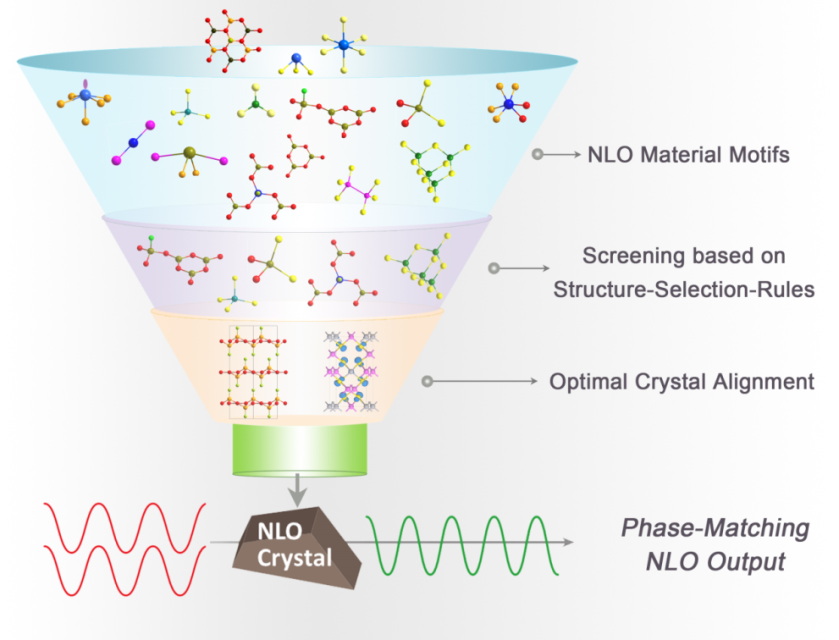Nonlinear optical (NLO) crystals are important fundamental materials for current and future optoelectronic technologies. The development of NLO crystals largely determines the development of laser technology.
In the 1980s and 1990s, the anionic group theory proposed by Professor CHEN Chuangtian has promoted the discovery of BBO, LBO and KBBF NLO crystals. The famous “China Brand” crystals have met the requirement of laser technology in the ultraviolet (UV) and visible regions.
Since the beginning of this century, with the development of deep-UV and mid-infrared (mid-IR) laser applications, the expected NLO crystals have similar performance requirements and exhibit unique technical specifications compared with those in the spectral regions from UV to near-IR. The performances criteria corresponded to different regions are usually affected by micro-functional primitives of different characteristics.
In order to accelerate the improvement of NLO performance to meet the needs of high-power lasers, the expansion of theoretical methods to clarify the structure-property relationship of NLO crystals in different spectral regions has become a key issue that must satisfy the requirements of wider-band applications.
Recently, LIN Zheshuai’s research group from Technical Institute of Physics and Chemistry, Chinese Academy of Sciences (TIPC, CAS) published a review article. The review article has systematically summarized their original contribution to the development of deep-UV and mid-IR NLO crystals.
In response to the core issues of this field, they have developed a set of first-principles calculation and analysis tools in recent years to clarify the NLO mechanism. Furthermore, a NLO materials design system has been developed to accurately obtain NLO crystal structural parameters and key NLO properties including band gaps, second harmonic generation effects, birefringence and phase-matching wavelength. Thus, one can not only better understand the relationship between the microstructure and macroscopic properties of NLO materials, but also more effectively design new NLO materials.
Based on this first-principles design system, Lin’s group elaborated on the structural design strategies of novel NLO materials in the deep-UV and mid-IR regions, including the regulation of cations and the expansion of anionic groups to enhance the deep-UV NLO performance, and the construction of polar tetrahedral structure to enhance the mid-IR NLO properties. These structural design strategies have led to the experimental discovery of a series of deep-UV NLO candidates such as ABBF and BBF, as well as a series of experimental advances of mid-IR thiophosphates and diamond-like chalcogenides. These original research results show the importance of first-principles design in promoting the development of NLO crystals, which also manifest its key role in the exploration of current and future NLO materials.

This work, selected as the cover article, was published on Accounts of Chemical Research with the title of “First-Principles Design and Simulations Promote the Development of Nonlinear Optical Crystals” (DOI: 10.1021/ acs.accounts.9b00448). The authors are KANG Lei, LIANG Fei, JIANG Xingxing, LIN Zheshuai and CHEN Chuangtian.
https://pubs.acs.org/doi/10.1021/acs.accounts.9b00448
NEWS